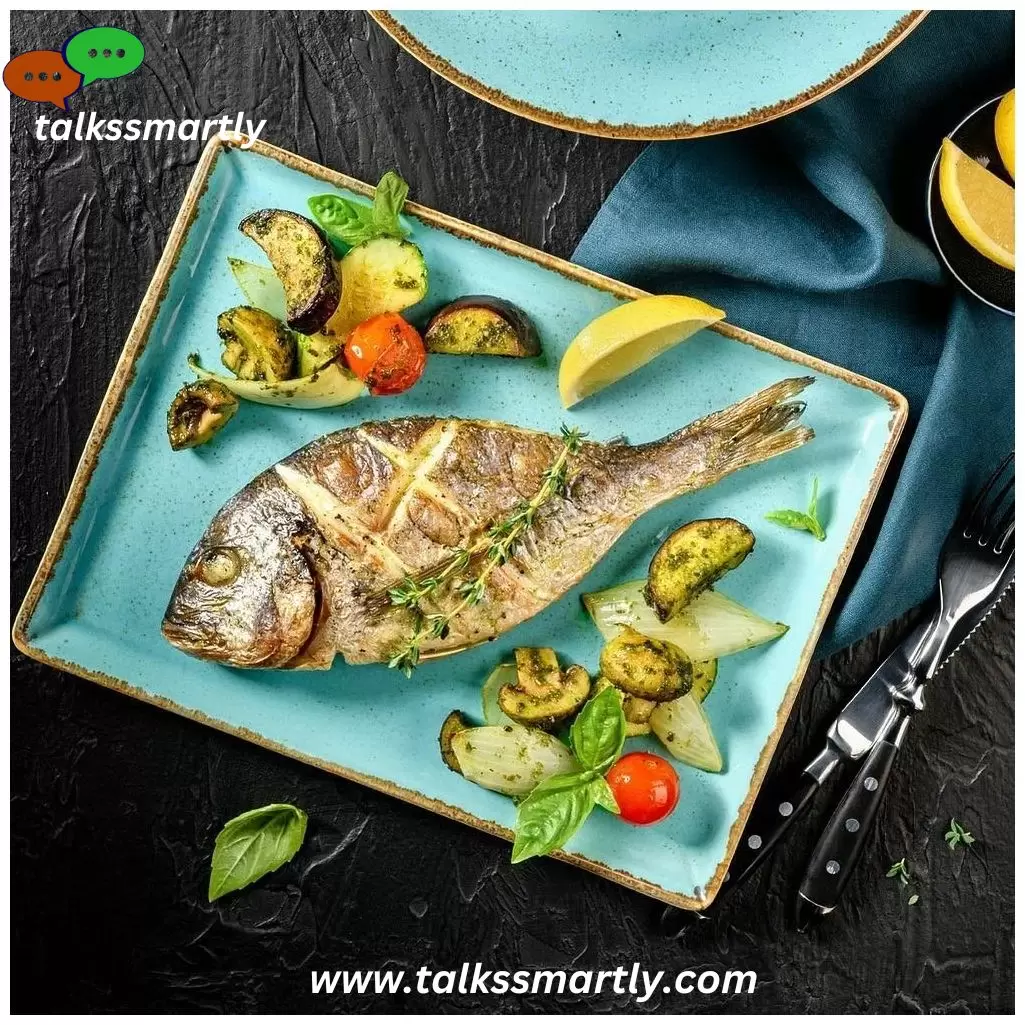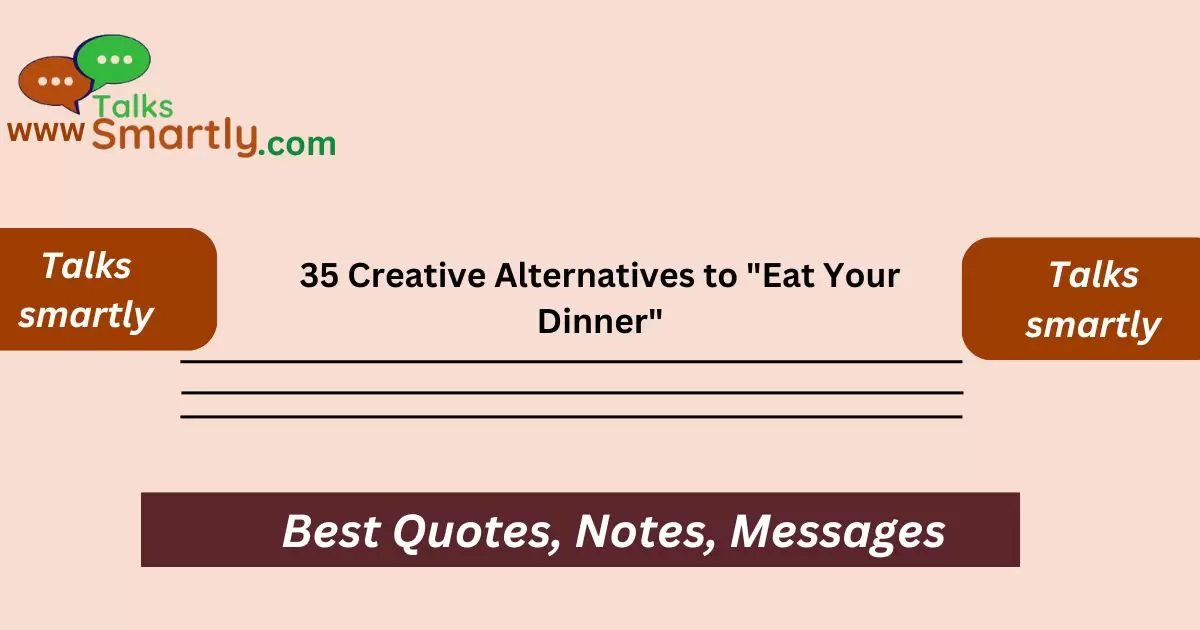“Dinner time can sometimes be a battle, especially if you’re trying to encourage “someone to eat. Saying “Eat your dinner” can feel repetitive and uninspired”
If you’re looking to spice up the way you ask someone to enjoy their meal, you’re in the right place.Explore creative ways to encourage dinner consumption with these alternative phrases thLet’s dive into these innovative alternatives and find a fresh way to say “Eat your dinner” that suits any occasion or personality.
From playful to polite, these phrases will make mealtime a little bit more enjoyable will make mealtime more engaging and less of a chore. These suggestions will not only add variety to your language but also make the experience more pleasant for everyone involved.
35 Creative Alternatives to “Eat Your Dinner”
- Dig in and enjoy!
- Time to savor your meal!
- Feast your eyes and your stomach!
- Let’s get this dinner party started!
- Time to indulge in your dinner!
- How about we start eating?
- Let’s enjoy this delicious meal!
- Don’t let this meal go cold!
- Give this dinner a try!
- Let’s dive into this feast!
- Your meal is ready and waiting!
- Tuck into your dinner!
- Start enjoying this delicious food!
- Time to taste this lovely meal!
- Get your fork and dig in!
- Let’s savor every bite of dinner!
- Ready for a delightful dinner?
- Time to relish your meal!
- Let’s dig into this feast!
- Your dinner is calling your name!
- Satisfy your appetite with this meal!
- Enjoy the flavors of your dinner!
- Time to munch on this meal!
- Let’s get started on your dinner!
- This meal is all yours to enjoy!
- How about tasting your dinner now?
- Let’s make dinner time fun!
- Dinner is served – let’s eat!
- Time to make a meal out of this!
- Indulge in this lovely dinner!
- Ready for some dinner delight?
- Taste the goodness of your meal!
- Dinner awaits – time to eat!
- Savour every moment of your meal!
- Let’s enjoy this meal together!
1. Dig in and enjoy!
This is an enthusiastic way to invite someone to start their meal. It adds excitement to the mealtime.
Example: “The food served – dig in and enjoy!”
2. Time to savour your meal!
Encourages the eater to take their time and enjoy the flavors of the meal.
Example: “Dinner’s ready – time to savour your meal and relax.”
3. Feast your eyes and your stomach!
This phrase combines visual enjoyment with the act of eating.
Example: “Look at that spread – feast your eyes and your stomach!”
4. Let’s get this dinner party started!
Adds a festive and fun tone to the mealtime, especially for family dinners.
Example: “Everyone’s here – let’s get this dinner party started!”
5. Time to indulge in your dinner!
Highlights the pleasure of eating, making it feel like a treat.
Example: “Tonight’s meal is extra special – time to indulge in your dinner!”
6. How about we start eating?
A polite way to suggest it’s time to begin the meal.
Example: “Everything’s set – how about we start eating?”
7. Let’s enjoy this delicious meal!

A simple invitation to appreciate the meal together.
Example: “It smells amazing – let’s enjoy this delicious meal!”
8. Don’t let this meal go cold!
A gentle reminder to start eating before the food loses its warmth.
Example: “Dinner’s hot – don’t let this meal go cold!”
9. Give this dinner a try!
This phrase expresses optimism about the meal, encouraging someone to take a bite.
Example: “I made something new tonight – give this dinner a try!”
10. Let’s dive into this feast!
Creates a sense of excitement and anticipation for a hearty meal.
Example: “Everything looks great – let’s dive into this feast!”
11. Your meal is ready and waiting!
This phrase adds a sense of readiness and preparation to the meal.
Example: “Dinner’s prepared and set – your meal is ready and waiting.”
12. Tuck into your dinner!
A casual way of telling someone to eat, often used in British English.
Example: “Don’t wait too long – tuck into your dinner before it cools down.”
13. Start enjoying this delicious food!
Encourages someone to start their meal with an emphasis on taste.
Example: “It smells amazing – start enjoying this delicious food!”
14. Time to taste this lovely meal!
A softer way to introduce the meal, focusing on the love that went into cooking.
Example: “This took some effort – time to taste this lovely meal.”
15. Get your fork and dig in!
A direct and playful way to tell someone to start eating.
Example: “Everything’s served, so grab your fork and dig in!”
Sayings Similar to “What’s the Plan, Stan?”
16. Let’s savour every bite of dinner!
Encourages mindful eating and enjoying the food slowly.
Example: “Tonight’s special, so let’s savor every bite of dinner.”
17. Ready for a delightful dinner?
Builds anticipation before the meal, setting the tone for a pleasant experience.
Example: “I hope you’re hungry – are you ready for a delightful dinner?”
18. Time to relish your meal!
Highlights the enjoyment and satisfaction of eating.
Example: “This smells delicious – time to relish your meal.”
19. Let’s dig into this feast!
A fun and energetic way to announce that the meal is ready.
Example: “Everyone’s seated – let’s dig into this feast!”
20. Your dinner is calling your name!
Adds a playful tone, as if the food is waiting for the person.
Example: “I can hear it – your dinner is calling your name!”
21. Satisfy your appetite with this meal!
Focuses on fulfilling hunger, adding an extra layer of excitement.
Example: “This will definitely satisfy your appetite – enjoy!”
22. Enjoy the flavors of your dinner!
Encourages appreciating the diverse flavors in the meal.
Example: “Take a moment to enjoy the flavors of your dinner.”
23. Time to munch on this meal!
A lighthearted, casual way to encourage eating.
Example: “It’s ready – time to munch on this meal!”
24. Let’s get started on your dinner!
A simple and direct way to say it’s time to eat.
Example: “Everything’s here – let’s get started on your dinner.”
25. This meal is all yours to enjoy!
Makes the meal feel personal, giving ownership to the eater.
Example: “I made this just for you – it’s all yours to enjoy!”
26. How about tasting your dinner now?
A gentle suggestion to begin eating.
Example: “Dinner’s still hot – how about tasting your dinner now?”
27. Let’s make dinner time fun!
Adds an element of playfulness to the mealtime.
Example: “Dinner’s ready – let’s make it fun tonight!”
28. Dinner is served – let’s eat!
A straightforward and common way to announce that the meal is ready.
Example: “The table’s set – dinner is served, let’s eat!”
29. Time to make a meal out of this!
A playful way of saying it’s time to eat, often used when there’s plenty of food.
Example: “We’ve got a feast – time to make a meal out of this!”
30. Indulge in this lovely dinner!
Encourages the eater to fully enjoy the meal as a treat.
Example: “Tonight’s special – indulge in this lovely dinner.”
31. Ready for some dinner delight?

Adds excitement and anticipation to the upcoming meal.
Example: “Everything’s ready – are you ready for some dinner delight?”
32. Taste the goodness of your meal!
Focuses on the deliciousness of the meal and encourages savouring it.
Example: “This smells so good – taste the goodness of your meal.”
33. Dinner awaits – time to eat!
A simple reminder that the meal is ready and should be enjoyed.
Example: “Dinner’s hot – it awaits, time to eat!”
34. Savour every moment of your meal!
Encourages mindfulness and taking time to enjoy the experience of eating.
Example: “Let’s take our time and savour every moment of this meal.”
35. Let’s enjoy this meal together!
Highlights the joy of sharing a meal with loved ones.
Example: “Dinner’s ready – let’s enjoy this meal together!”
ANSWER TO KEY QUESTION
1. Why is it important to use creative alternatives to “Eat your dinner”?
Using creative alternatives can make mealtime more enjoyable, engaging, and fun for both adults and children. It helps avoid the repetitive and dull tone that “Eat your dinner” can often bring.
2. How can these alternatives make mealtime more fun for kids?
Creative phrases can add excitement and make the experience more playful. It can also encourage children to eat without feeling forced, making mealtime less stressful.
3. Are these alternatives useful for picky eaters?
Yes, using creative alternatives can encourage picky eaters to try their meals in a positive and non-pressuring way. It can shift the focus from forcing them to eat to making the experience enjoyable.
4. Can these phrases be used in formal settings?
Some alternatives, such as “Savour your meal” or “Enjoy the flavours,” work well in formal settings, while others are better suited for casual or family environments.
5. How do these alternatives help in establishing a healthy eating environment?
By using engaging and varied language, you create a relaxed and pleasant atmosphere around mealtime, which encourages a positive relationship with food.
Conclusion
Using these 35 creative alternatives to “Eat your dinner” can completely transform the way we approach mealtime. They allow us to add variety, avoid repetitive phrases, and inject some fun or formality depending on the situation.
Whether you’re trying to engage picky eaters, make dinner more enjoyable, or just mix things up, these alternatives help create a positive and welcoming dining experience for everyone.












